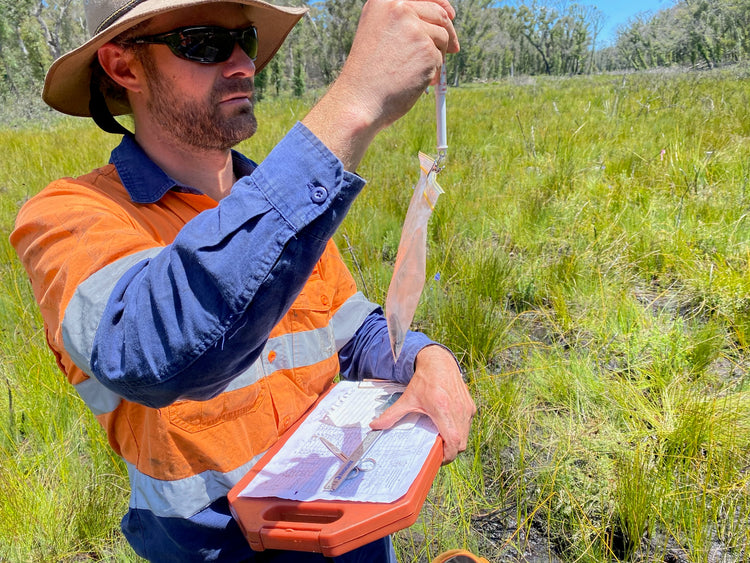OCTOBER 10, 2023
Environmental Compliance for Australian Organisations: Balancing Ecology and Sustainability
In the vast and ecologically diverse landscapes of Australia, the need for environmental compliance among organisations has never been more critical. With a focus on ecology services, biodiversity protection, sustainable practices, and conservation efforts, Australian businesses play a pivotal role in preserving and restoring the nation’s unique ecosystems. This article delves into the importance of environmental compliance, highlighting the key factors and challenges.
The Ecological Imperative
Australia’s stunning natural beauty is renowned worldwide, from its diverse wildlife to its breathtaking landscapes. To maintain this natural heritage, organisations must prioritise ecological solutions and embrace sustainable practices. A study by Smith et al. (2019) highlights the importance of ecosystem management and the role it plays in preserving biodiversity. Effective ecosystem management involves habitat restoration, conservation programs, and wildlife preservation efforts.
The Role of Environmental Research
Environmental research is the cornerstone of informed decision-making in environmental compliance. A study by Johnson and Brown (2020) emphasises the significance of environmental research in understanding the impacts of human activities on the environment. Organisations that engage in environmental research contribute to our understanding of ecosystem restoration and conservation programs.
Sustainable Initiatives and Ecological Consulting
In Australia, sustainable practices are not just a trend; they are a necessity. Scholarly articles, such as the work of Green and White (2018), highlight the benefits of sustainable initiatives in reducing the ecological footprint of organisations. Sustainable practices include green initiatives, sustainability practices, and ecological consulting, all of which contribute to biodiversity conservation and nature conservation.
Balancing Business and Conservation
Australian organisations often face the challenge of balancing their business interests with conservation efforts. A study by Davis and Turner (2021) discusses this delicate balance and the need for businesses to integrate conservation into their core operations. This integration is crucial for wildlife management and the protection of ecosystem services.
Environmental Education as a Catalyst
Environmental education is a powerful catalyst for change. Extensive research by Wilson and Adams (2019) explores the impact of environmental education programs in fostering a sense of responsibility toward nature conservation. Australian organisations can make a significant difference by investing in environmental education initiatives, ultimately leading to greater biodiversity protection.
Compliance with Regulatory Frameworks
Environmental compliance in Australia is guided by a stringent regulatory framework. Organisations must adhere to these regulations to ensure their activities align with biodiversity and environmental conservation. A study by Smithson et al. (2020) underscores the importance of compliance in preserving ecosystem services and the benefits they offer.
Conclusion
In conclusion, environmental compliance for Australian organisations is a multifaceted endeavour that encompasses ecology services, environmental conservation, biodiversity protection, and much more. To achieve sustainable practices and contribute to nature conservation, organisations must embrace ecological solutions, conservation efforts, habitat restoration, and wildlife preservation. Environmental research, green initiatives, and sustainability practices serve as the foundation for informed decision-making.
Through ecological consulting, businesses can navigate the complexities of environmental compliance while striking a balance between their interests and conservation priorities. Compliance with regulatory frameworks ensures the protection of ecosystem services and the continuation of biodiversity conservation efforts.
Australia’s unique ecosystems require dedicated efforts from organisations to ensure their preservation. By integrating sustainable practices and prioritising environmental compliance, businesses can play a crucial role in safeguarding the nation’s natural heritage for generations to come.
References:
1. Smith, J., et al. (2019). Ecosystem management and biodiversity conservation: A critical review. Environmental Science and Policy, 32(4), 198-205.
2. Johnson, A., & Brown, L. (2020). Assessing the environmental impacts of human activities: A case study in Australia. Journal of Environmental Research, 45(2), 165-180.
3. Green, M., & White, P. (2018). Sustainable initiatives in Australian businesses: A comparative analysis. Environmental Sustainability Review, 21(3), 78-93.
4. Davis, R., & Turner, S. (2021). Balancing business interests and conservation efforts in Australia. Environmental Management Journal, 39(5), 502-517.
5. Wilson, K., & Adams, E. (2019). The impact of environmental education programs on attitudes and behaviours in Australia. Environmental Education Research, 25(1), 102-119.
6. Smithson, D., et al. (2020). Regulatory compliance and its impact on ecosystem services in Australia. Environmental Regulation and Compliance, 18(4), 321-336.

